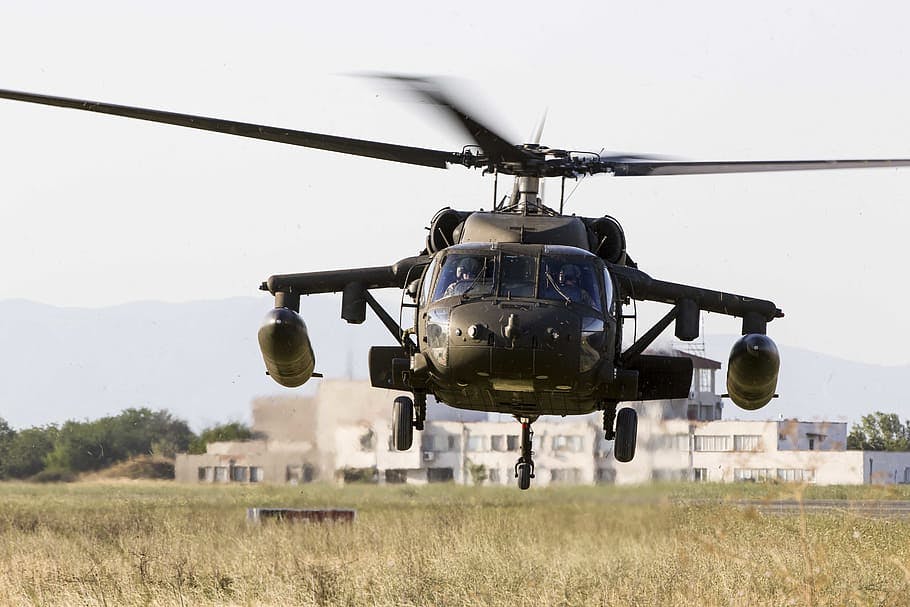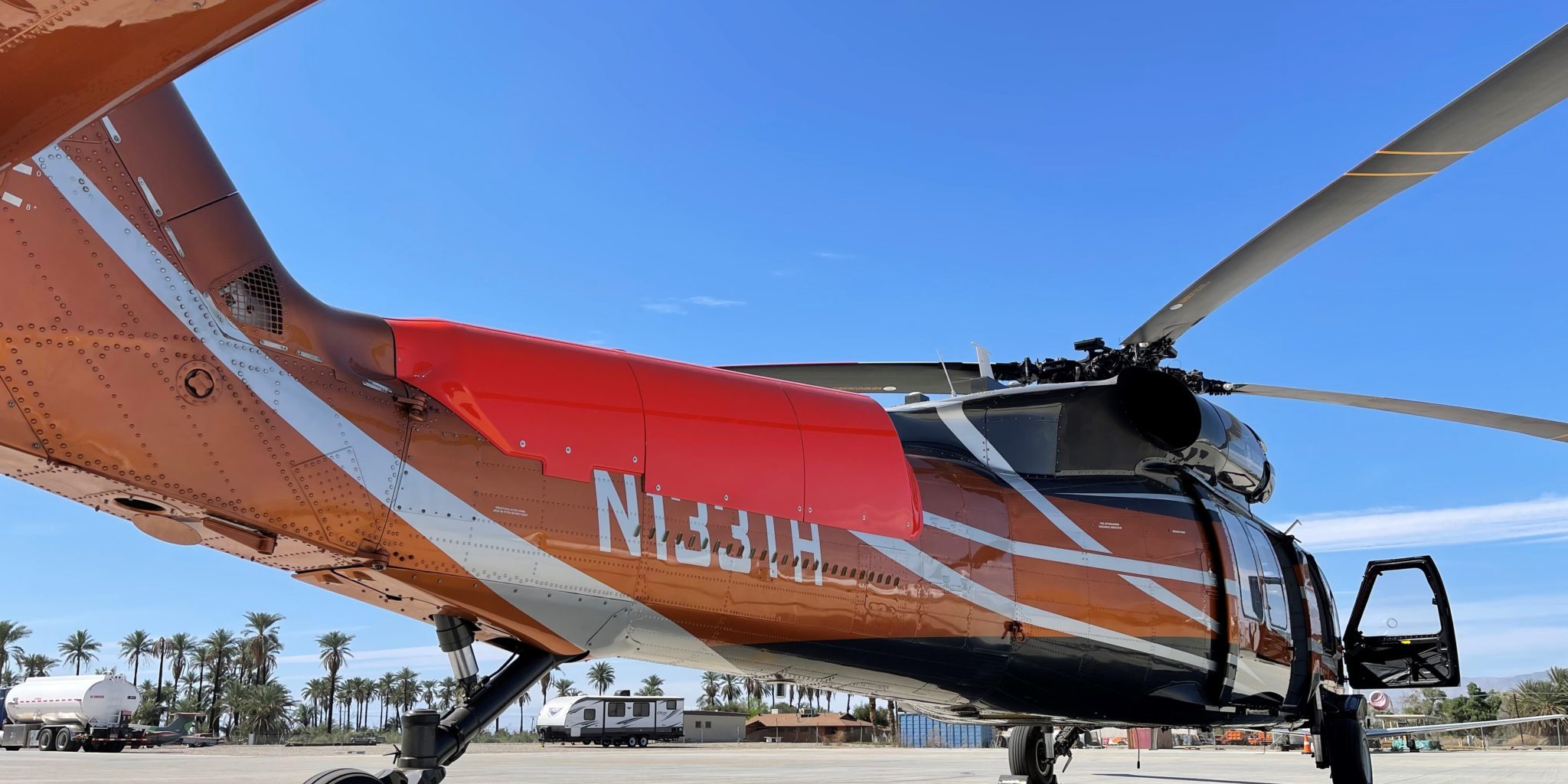The UH 60 Black Hawk: A Comprehensive Overview to Its Attributes and Abilities
The UH 60 Black Hawk: A Comprehensive Overview to Its Attributes and Abilities
Blog Article
Recognizing the Role and Importance of Different UH60 Components in Aeronautics Workflow
In the intricate world of aviation operations, every element of a UH60 helicopter plays a critical duty in ensuring efficient and secure trips. As we check out the value of the blades system, engines, avionics, transmission system, and landing equipment in UH60 operations, a much deeper gratitude for the harmony of these components arises, shedding light on the intricacies that underpin the air travel sector's dedication to precision and dependability.
Blades System
The blades system, an important element in helicopter layout, plays a pivotal role in giving lift and directional control during flight. Being composed of the primary blades and tail blades, this system is responsible for creating the essential aerodynamic pressures to maintain the helicopter maneuverable and airborne.
In comparison, the tail blades, placed at the tail end of the helicopter, combats the torque generated by the major rotor's turning, ensuring the helicopter stays balanced and can make regulated turns. Together, these blades elements create a sophisticated system that allows helicopters to perform a wide variety of trip maneuvers successfully and securely.

Engines
In aeronautics operations, the proper performance of engines is extremely important to enhancing the rotor system's aerodynamic capabilities in helicopters. The UH60 helicopter is furnished with two General Electric T700-GE-701D engines, each giving 1,890 shaft horse power. These turboshaft engines are crucial parts that power the main rotor transmission, tail blades system, and other vital helicopter systems. The engines play a crucial function in producing the required power to raise the aircraft, control its flight, and guarantee a risk-free procedure.
The dependability and efficiency of these engines are essential elements in the UH60's general functional efficiency and safety and security. Normal maintenance, evaluations, and adherence to producer guidelines are crucial to maintain the engines in optimum problem. Keeping an eye on various criteria such as engine temperature, oil pressure, and gas consumption is necessary to spot any kind of prospective issues at an early stage. In instance of engine breakdowns or emergency situations, pilots depend on their training and the helicopter's style functions to perform needed procedures swiftly and securely. On the whole, the engines in UH60 helicopters are necessary elements that contribute dramatically to the aircraft's operational success and goal efficiency.
Avionics
Avionics modern technology plays a pivotal role in modern aviation procedures, incorporating electronic systems for communication, navigating, and airplane monitoring. In the UH60 helicopter, avionics encompass a variety of systems that make certain effective and safe trip. uh 60. These systems include interaction tools, such as radios and transponders, which enable pilots to interact with air traffic control service and other airplane. Navigating systems, like GPS and inertial navigation units, provide accurate positioning details to the staff, helping in course planning and guaranteeing specific navigation throughout flights. In addition, avionics include trip administration systems that assist automate different jobs, such as auto-pilot features and trip data recording.
In addition, avionics play an essential learn this here now role in enhancing situational awareness for pilots, allowing them to keep an eye on vital flight specifications, weather condition conditions, and prospective threats in real-time. By giving vital data and automation abilities, avionics add considerably to the security, efficiency, and total performance of UH60 helicopters in diverse aviation operations.
Transmission System
An important component of the UH60 helicopter's functionality and performance is its transmission system. The transmission system in a UH60 helicopter is in charge of transferring power from the engines to the main blades and tail blades systems. This crucial element makes certain that the helicopter can navigate successfully and preserve security during trip procedures.
The transmission system in the UH60 helicopter contains various parts, including the main transmission, intermediate transmission, tail gearbox, and drive shafts. Each of these elements plays a critical duty in guaranteeing that power is dispersed efficiently throughout the airplane.
The primary gearbox is particularly vital as it moves power from the engines to the major blades system, permitting the helicopter to lift off the ground and accomplish onward, backward, and side activity. The tail transmission, on the other hand, transfers power to the tail blades, which important source aids neutralize the major blades's torque and offers directional control.
Touchdown Equipment


The landing equipment of the UH60 helicopter offers as a critical part for ensuring safe and stable ground operations, enhancing the capability of its transmission system. Consisting of wheels, shock absorbers, and support frameworks, the touchdown gear sustains the helicopter's weight during takeoff, touchdown, and while on the my website ground. Routine assessments, lubrication, and replacement of damaged parts are necessary to promote the dependability and performance of the landing gear system.
Final Thought
In final thought, the different parts of the UH60 helicopter play crucial duties in guaranteeing the smooth operation of aviation tasks. uh 60. The rotor system, engines, avionics, transmission system, and landing gear all collaborate to make certain the safety and efficiency of the airplane. Understanding the value of each component is important for pilots, engineers, and upkeep team to make certain the total capability of the UH60 helicopter during trip operations

Report this page